I have a general question regarding MOSFET Selection. I am trying to select a MOSFET for DC use. I am looking to replace a 5A 24V Relay with a N Type MOSFET.
The MOSFET would be driven from a micro so I would need a logic level gate. The micro is 5v Logic.
I am going to be mass producing these so cost is my main driver.
Most of the MOSFETs that I have come across do not have a DC area called out in the SOA curves. For instance the one I was potentially looking at was the IRLR3105PBF.
Here are the params I looked at:
VDSS Max = 55V which is >> than my 24Vdc Bus so that is fine.
Power Calc - 5A*5A*0.37mOhm = .925W (High but I think a DPAK can handle that)

FIGURE 1 & 2 - VGS @ 5V -> VDS = 0.3V @ 25C (but the graph 20uS Pulse I want this to be DC?) VGS @ 5V -> VDS = 0.5V @ 175C (again I want this to be DC?)

FIGURE 8 - Looking at VDS - 0.5V (Worst case) it only shows 1V. 1V can go up to 20A way more than I need for a 10mSec pulse. (I am actually confused on this should I just assume that I will have VDS of 1V looking at this?)
But then comes my main question I want DC where do I look for that?
Is this just a bad choice? (I get the feeling it is because no where in the data sheet does it talk about DC) What should I look for when searching Digikey?
TLDR How should I select FETs for DC use?